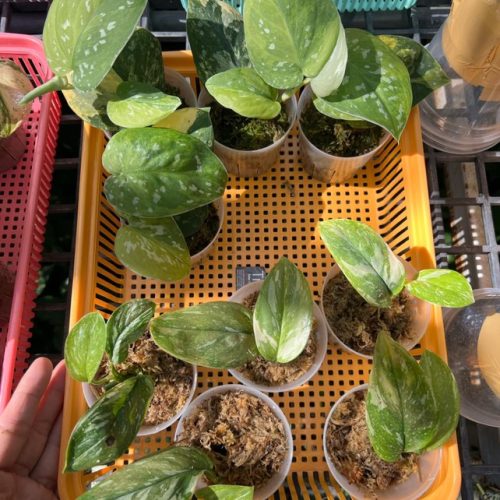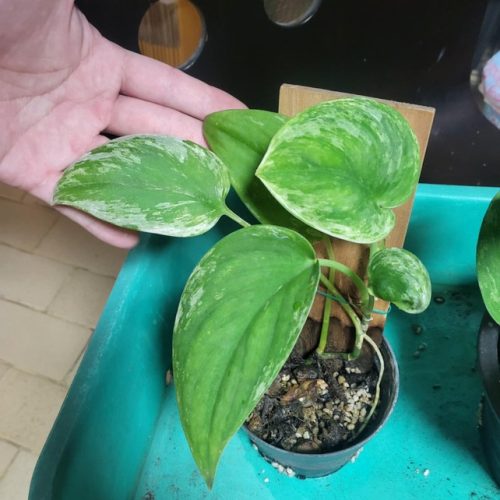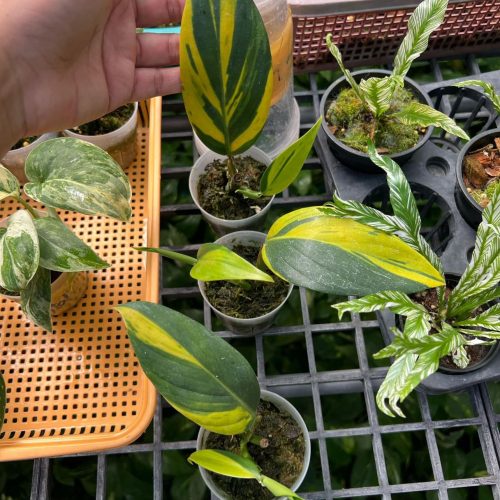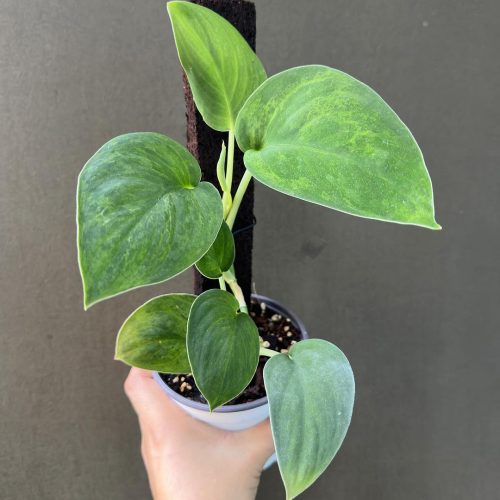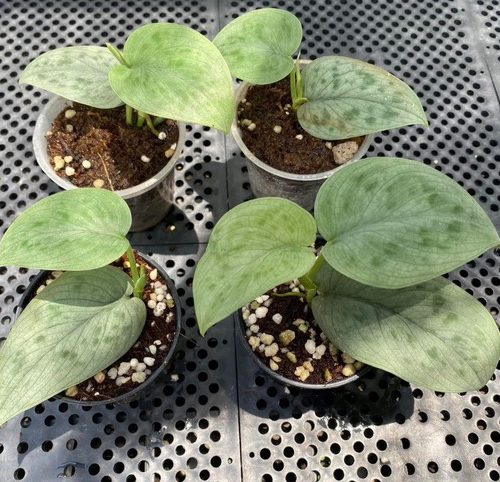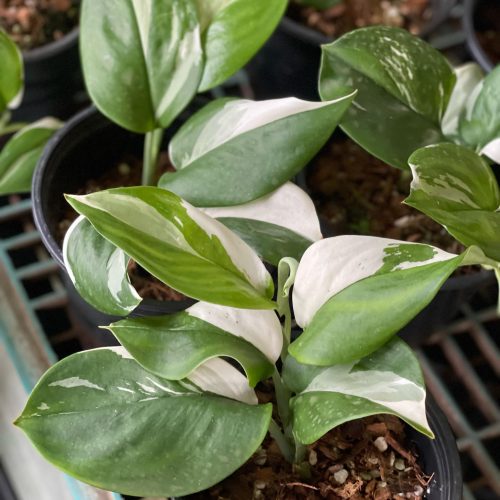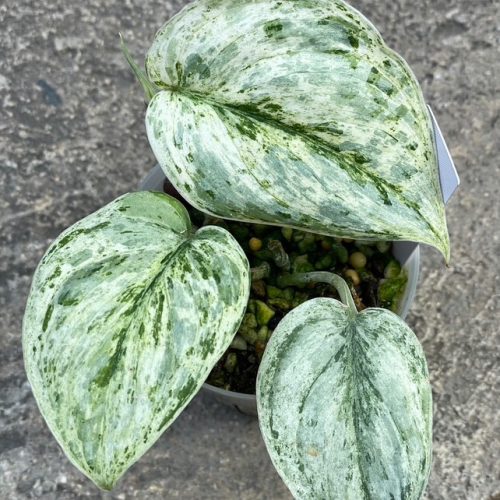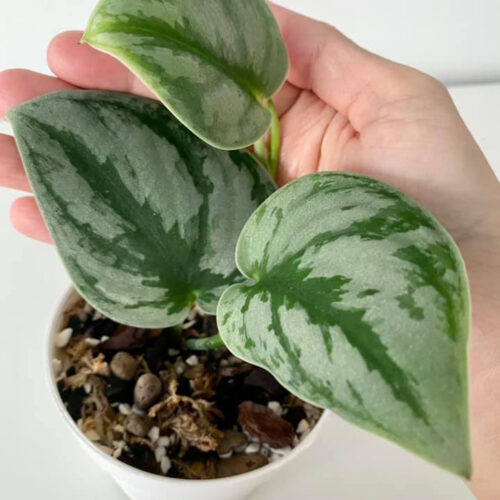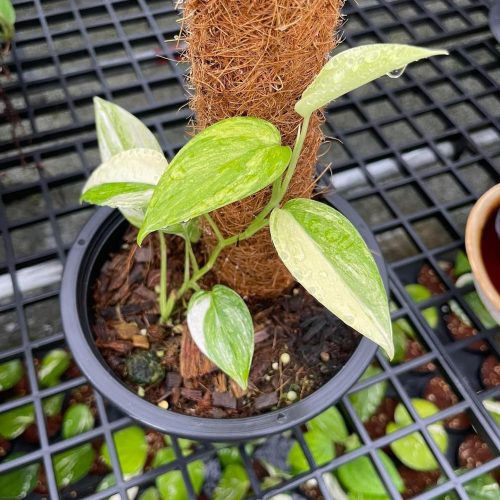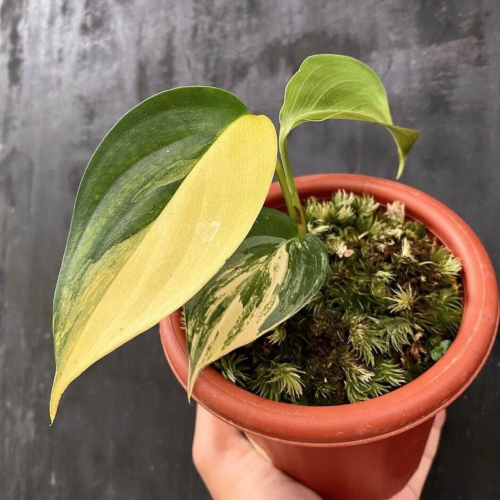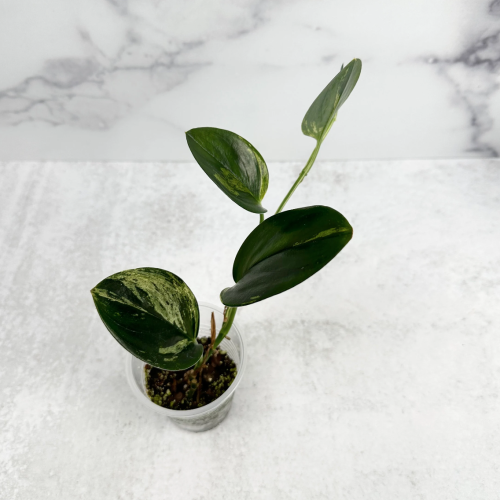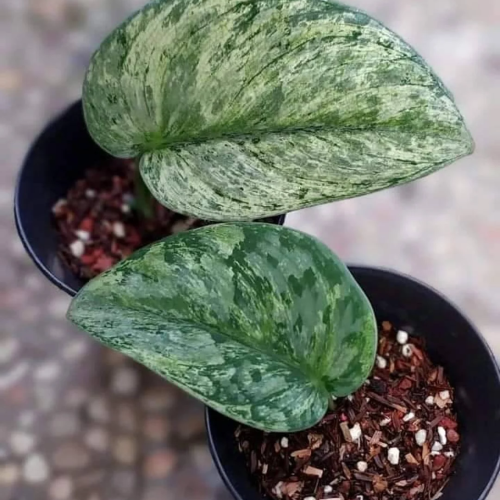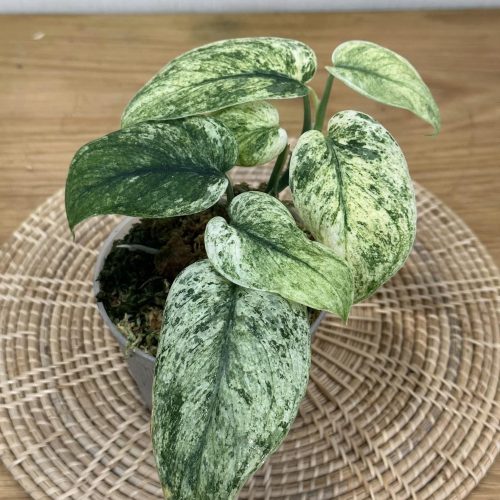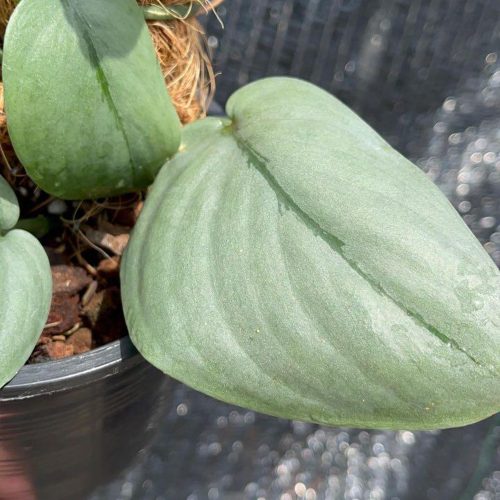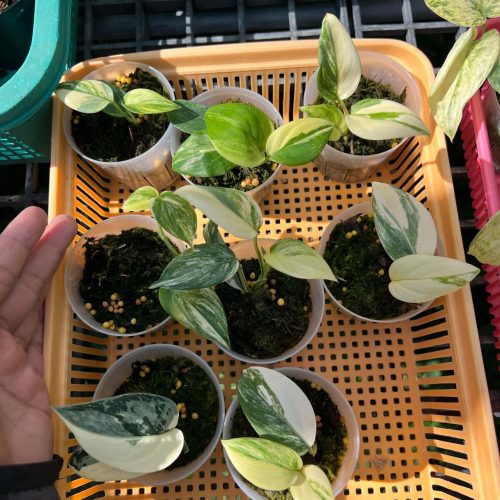The Scindapsus genus, also known as Satin Pothos or Silver Vine, is a beloved group of houseplants known for their stunning foliage and easy-care nature. This comprehensive guide will explore the various types of Scindapsus, their unique characteristics, and tips for growing them successfully.
Introduction
Scindapsus plants are members of the aroid plant family, which includes popular varieties like Philodendron, Monstera, and Anthurium. Native to the tropical regions of Southeast Asia, these plants are prized for their beautiful, variegated leaves and vining growth habit. Similar to Aglaonema and Epipremnum, Scindapsus plants are not only attractive but also relatively easy to care for.
Silver Satin Scindapsus
The silver satin scindapsus (Scindapsus pictus ‘Argyraeus’) is characterized by its silver-gray foliage with dark green edges. This striking plant adds a touch of contemporary elegance with its satin-like leaves.
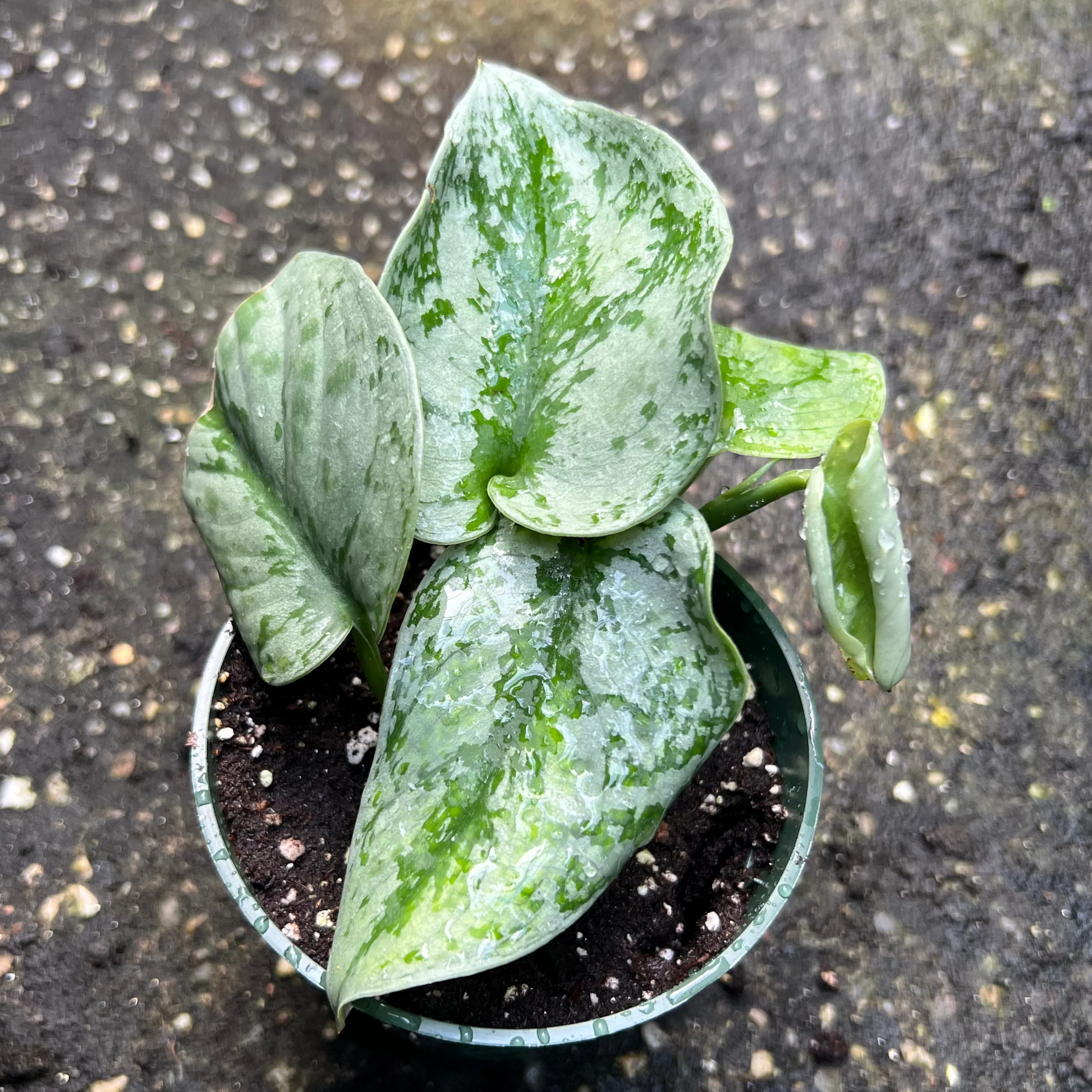
Growth Pattern
The silver satin scindapsus is a trailing vine that looks beautiful in hanging baskets. It can reach lengths of 3-6 feet as a houseplant. The stems have a shimmery appearance that complements the unique foliage.
Care Requirements
Silver satin scindapsus thrives in bright, indirect light. Avoid direct sun which can scorch its leaves. It prefers average room humidity and moderately moist soil that drains well. Fertilize monthly in spring and summer.
Neon Scindapsus
Scindapsus pictus ‘Exotica’ is commonly known as neon scindapsus or satin pothos. This popular houseplant variety has lime green and yellow variegated leaves that appear to glow.

Foliage Details
The neon scindapsus has pointed, heart-shaped leaves with splendid variegation. The leaf margins are outlined in yellow or neon green with central gray-green shades. There is striking contrast between the colors.
Growing Habits
In its native jungle habitat, neon scindapsus is an evergreen vine that can reach lengths of 65 feet. Indoors, it stays bushier and more compact with heights of 3-6 feet. The long stems trail or climb nearby surfaces.
Silvery Ann Scindapsus
Scindapsus pictus ‘Silvery Ann’ features beautiful silver variegation on small, rounded leaves. It has an understated elegance and is easy care as a houseplant.
Discover the most sought-after Scindapsus varieties of 2023

Leaf Appearance
This scindapsus variety has dark green rounded leaves abundantly splashed with silver variegation. The silver markings tend to be concentrated near the center of the leaves. There is prominent veining visible underneath foliage.
Caring for Silvery Ann
Silvery ann scindapsus grows best in medium to bright, indirect light. Avoid direct light which causes leaf scorching. Water when the top inch of soil is dry. It tolerates a wide humidity range and average household conditions.
Satin Jade Scindapsus
Scindapsus pictus ‘Satin Jade’ is a lush green variety without variegation. Its leaves have a polished, waxy appearance with beautiful olive green shades.

Description
Satin jade scindapsus has pointed, heart-shaped leaves that emerge in rich shades of jade green. Mature leaves develop darker green hues. All foliage has a smooth, satiny texture and sheen. Vine-like stems can reach 10 feet long.
Growing Needs
Satin jade scindapsus thrives indoors with household humidity and moderate watering. It grows well in medium indirect light but also tolerates low light areas. Avoid direct hot sun which damages leaves.
Exotica Scindapsus
Scindapsus pictus ‘Exotica’ features dark green leaves brightly variegated in shades of yellow and lime green. The foliage appears hand-painted with glowing colors.
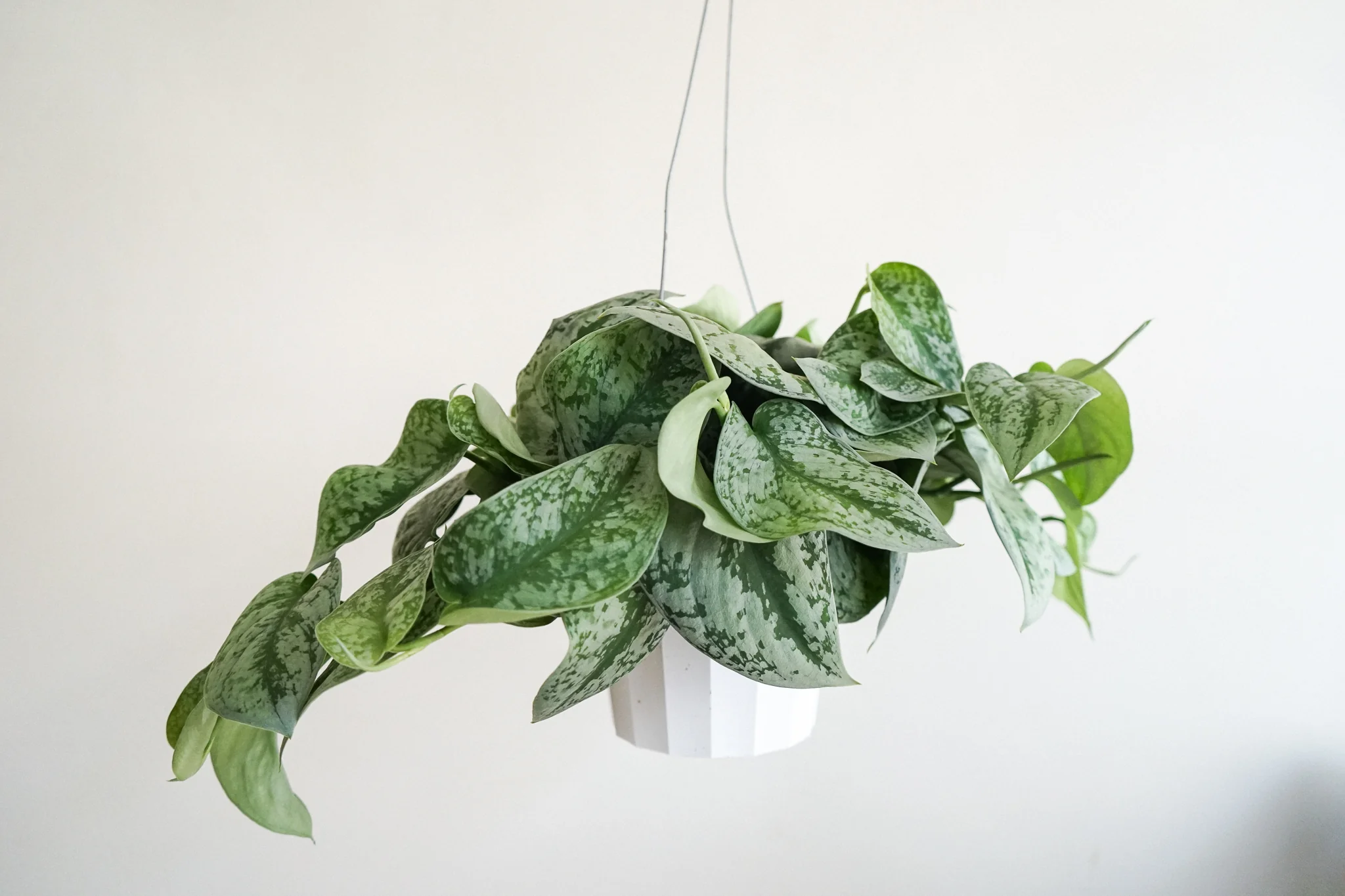
Foliage Details
This exotic scindapsus variety has pointed leaves distinctly outlined in yellow with splashy central variegation. The yellow margins fade to lime green nearer the inner leaf. Leaves can reach 5 inches long upon maturity in ideal growing conditions.
Growth Habit
Exotica scindapsus is a trailing vine plant that looks stunning in hanging containers. Given proper support, vines can reach lengths of 6 feet or more. Stems have a red tinge when young.
Scindapsus species are the most sought after by aroid plant lovers
Conclusion
The scindapsus genus contains many popular houseplant varieties like satin pothos, neon pothos, and silver satin. They are appreciated for their heart-shaped waxy leaves and vining plant habits. Scindapsus foliage comes in green shades, sometimes with unique yellow, silver, or lime green variegation. With proper care, these versatile plants can thrive for years indoors.
Frequently Asked Questions
- How do I differentiate between the different Scindapsus types? Each Scindapsus variety has unique leaf patterns and colors. For example, Silver Satin has silver-gray foliage with dark green edges, while Neon Scindapsus features lime green and yellow variegated leaves. The Silvery Ann variety is known for its silver variegation on small, rounded leaves, and Satin Jade stands out with its polished, waxy, jade green leaves.
- Can Scindapsus plants purify indoor air? Yes, Scindapsus plants are known to have air-purifying qualities. They can help remove certain toxins from the air, making them not only visually appealing but also beneficial for indoor environments.
- How often should I water my Scindapsus plant? Water your Scindapsus when the top inch of soil feels dry. Overwatering can lead to root rot, so it’s important to let the soil partially dry out between waterings. The watering frequency may vary depending on the light conditions and season.
- Is it necessary to prune Scindapsus plants? Pruning is not necessary for the health of the plant, but it can help maintain a desired shape and size, especially for vining varieties. Regular pruning can encourage fuller growth and keep the plant looking tidy.
- Are Scindapsus plants safe for pets? Scindapsus plants are mildly toxic if ingested, so it’s advisable to keep them out of reach of pets and children. Ingestion can cause irritation of the mouth, lips, and throat.
See more: How to Grow Scindapsus in 5 Easy Steps





















